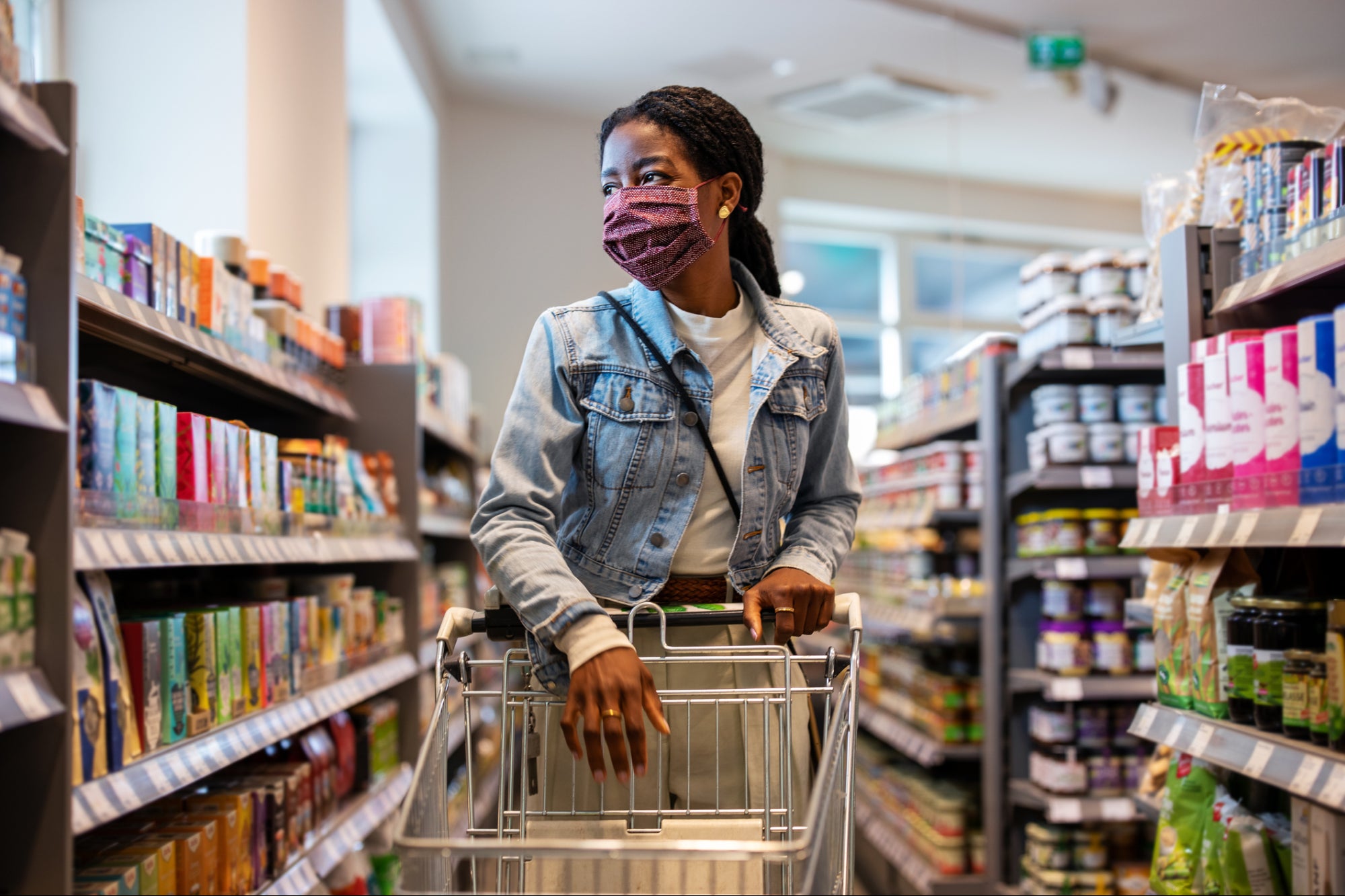Future Buying Trends that Every Entrepreneur Needs to Know Read on to learn about consumer behaviors we can expect to continue throughout the pandemic, and some even beyond.
By FlexTal Edited by Jason Fell
Opinions expressed by Entrepreneur contributors are their own.

This article was written by Kay VanAntwerpen, a member of the Entrepreneur NEXT powered by Assemble content team. Entrepreneur NEXT powered by Assemble is freelance matching platform leading the future of work. If you're struggling to find, vet, and hire the right freelancers for your business, Entrepreneur NEXT will help you hire the freelancers you need, exactly when you need them. From business to marketing, sales, design, finance, and technology, we have the top 3 percent of freelance experts ready to work for you.
Because Covid-19 is a once-in-a-generation disaster, there's an element of difficulty in predicting consumer behavior as the pandemic continues (and what will happen beyond that). If you recall, there was an initial panicked streak of toilet paper and hand sanitizer hoarding that has since ended.
There are, however, a number of reliable consumer behaviors we can expect to continue throughout the pandemic — and some even beyond. Stay-at-home orders, for instance, have changed the way people shop. Nielsen, a global marketing research firm, conducted a consumer insight investigation that identified six behavior thresholds exhibited by consumers during the pandemic:
Proactive health-minded buying: purchases of products that promote health and wellness.
Reactive health management: products essential to virus evasion and immediate healthcare in the pandemic (hand sanitizer, masks, etc).
Pantry preparation: An increase in purchases of items that keep longer in the pantry (such as ramen noodles, which have increased in sales 578 percent), a rise in the size of grocery orders.
Quarantine prep: More online orders, fewer store visits and strain on the supply chain.
Restricted living: Rising price concerns, more restricted shopping trips.
New normal: While consumers attempt to return to normal, there's a marked permanent change in their buying habits, such as maintained stockpiling, continued use of e-commerce and renewed health caution.
Online shopping is here to stay.
Unsurprisingly, online shopping has been one of the most successful sectors during the pandemic. Since March, brick-and-mortar retail sales dropped 8.7 percent. March also saw many consumers across all age groups using online grocery delivery for the first time.
Things are only looking up for online retailers, with the holiday season just around the corner and sales expected to rise with holiday gift giving. eMarketer recently predicted a $1.013 trillion holiday sales season for the retail sector as a whole — only the second season to top one trillion in history (and a 0.9 percent sales increase over last year). A majority of this growth is expected in online sales. Brick and mortar stores are expected to make up 81.2 percent of holiday sales, which is a 4.7 percent decline since last year.
It's difficult to predict if online sales will continue to prevail, or if — whenever the virus is finally under control — consumers will return to their favorite brick and mortar establishments. (At least the ones that are still in business — 29 large retailers have already filed for bankruptcy since the start of the pandemic).
The number one problem shared among entrepreneurs today is finding, vetting, hiring, and retaining expertise.
The shipping sector joins hands with online retailers.
Shipping companies such as FedEx and UPS are riding the online sales wave to extreme success. UPS stock is trading at $174 a share, up 47 percent for the year — meanwhile, FedEx is up 87 percent for the year.
Shipping sector industry experts have been preparing for "Shipageddon" — the upcoming holiday season. Both FedEx and UPS are warning would-be Christmas shoppers that most of their end-of-year capacity is reserved, and UPS has begun adding surcharges.
Consumer goods are getting stockpiled.
Prior to the Coronavirus pandemic, most Americans (with the exception of doomsday preppers and conspiracy theorists) didn't store enough food at home for even a short supply disruption. At the start of the pandemic, there was a rush of what experts call "panic-buying." Consumers hit the grocery stores to nab up items they feared would become scarce or rise in price (hand soap and toilet paper for example).
Aside from the practical applications as the pandemic continues, experts expect that the experience of scarcity and unpreparedness will have a psychological impact on consumers going forward. Even as the pandemic abates, consumers are much more likely to continue stockpiling grocery inventory in larger quantities.
In the more immediate future, experts expect another panic-buying surge may be upon us as the third wave of Covid-19 cases rise in the U.S. In August, the CPG firm Augusta polled shoppers and found that 38 percent of buyers had stockpiled at the start of the pandemic and planned to again at the start of a third wave. Another 15 percent of buyers said they did not stockpile at the start of the pandemic, but would this time around.
A reduction in discretionary spending.
While online sales are throttling up, that doesn't mean consumers are tossing items from their Amazon wishlist into the cart willy-nilly (unless that item is a book — in which case, children's book sales saw a 66 percent increase in the U.S.).
For the most part, consumer discretionary spending has dropped. Instead of treating themselves to new toys, consumers have a renewed focus on items of perceived immediate value: groceries, hygiene care, cleaning and home supplies, etc. The real winners are online retailers who carry these items such as Target, Walmart, Kroger and Costco. In these categories, consumers are spending the same amount — sometimes more.
Some industries will remain in uncertain waters.
You could probably guess the industries that took the biggest hits: restaurants, apparel stores (especially footwear — turns out when people stay at home, they stick to comfier options), accessories, travel, and any form of entertainment outside of the home (movie theaters, musicians and musical venues, etc).
So will these industries bounce back after the pandemic ends? If we look at countries that are now considered "past viral peak" as a model — then "bounce" probably isn't the right word. Growth is expected to be slow, and it will take time to see how consumer trends will return in these categories.
To hire the Experts you need, exactly when you need them, visit next.entrepreneur.com to schedule a meeting with our Expert solutions team.












